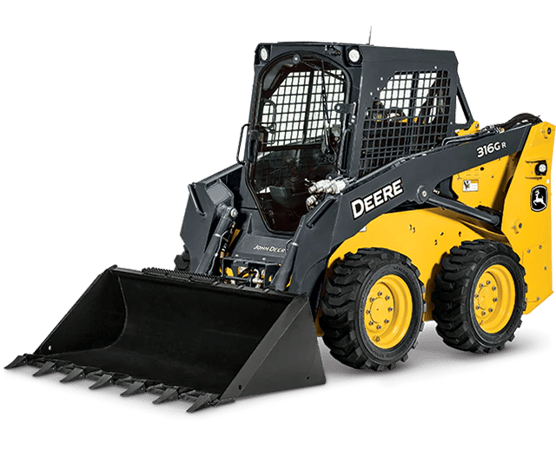Scissor Lift Rental: Safe and Efficient Lifting Solutions
Scissor Lift Rental: Safe and Efficient Lifting Solutions
Blog Article
Maximize Your Budget Plan by Recognizing the Costs Linked With Building And Construction Tools Leasings
Understanding the full scope of prices connected with construction devices services is essential for maximizing your budget plan. What approaches can be utilized to properly manage these prices and ensure a much more efficient rental experience?
Summary of Rental Prices
When considering building devices services, understanding the associated expenses is vital for reliable budgeting and task planning. Rental prices can differ significantly based on several variables, consisting of devices type, duration of rental, and place. The preliminary rental charge usually shows the equipment's market need and its linked functional abilities, influencing the overall expenditure.
Along with the base rental rate, ancillary expenses might occur, such as transportation charges, gas surcharges, and maintenance fees. It is important to make up these extra expenditures to precisely examine the complete price of renting equipment. The rental period can impact rates; longer services may certify for reduced rates, while temporary services may sustain higher daily fees.

Failure of Rental Rates
A comprehensive understanding of rental prices is essential for service providers and task managers intending to enhance their budget plans. Rental rates for construction tools normally contain several parts, including base prices, time-based charges, and usage fees.
Base rates are the core costs connected with the service of the tools, commonly determined by the kind and size of the machinery. These rates can differ significantly, affected by elements such as devices demand, accessibility, and regional market trends. Time-based fees, which might be daily, weekly, or monthly, offer to suit different task timelines and rental durations.
Furthermore, rental rates may consist of usage costs, which are applicable when devices is utilized past a defined threshold, making certain that the rental business can make up damage. Seasonal need variations can likewise affect rental rates, with peak building periods generally regulating higher prices.
Moreover, recognizing the rental business's plans regarding upkeep and insurance can supply additional understanding into the total expense structure. By analyzing these elements, professionals can make informed decisions, making sure the choice of rental tools lines up with both task demands and budget plan restraints.
Added Fees to Consider
Comprehending the ins and outs of additional costs is critical for specialists to manage their total service costs effectively. Past the common rental prices, different additional costs can considerably impact the total price of tools leasing. These charges typically include shipment and pickup fees, which can differ based on distance and logistics entailed in transferring the devices to and my website from the job website.
Moreover, some rental business may impose gas additional charges if the equipment is returned with much less fuel than when rented. It is additionally vital to recognize prospective cleaning costs, especially for specialized tools that calls for thorough upkeep after use.

Thoroughly examining the rental arrangement and clearing up these extra charges upfront can assist service providers avoid unexpected expenses and make sure that budget plans remain intact throughout the job lifecycle.
Upkeep and Repair Work Expenditures
Regular maintenance and repair work expenses are frequently neglected factors that can dramatically affect the general price of building and construction equipment leasings. When renting out equipment, it is vital to consider not only the rental charges yet also the prospective expenses related to keeping the equipment in optimum operating condition.
Numerous rental business consist of standard maintenance as part of the rental contract; nonetheless, extra comprehensive repair work or unanticipated failures can bring about added costs. It's important to examine the rental agreement thoroughly to comprehend what upkeep solutions are covered and what duties fall on the renter.
Furthermore, tools that is not well-kept can cause ineffectiveness at work website, possibly triggering hold-ups and boosting task prices. To mitigate these risks, it is advisable to conduct regular inspections and maintain open communication with the rental copyright pertaining to any kind of concerns that arise throughout usage.
Insurance Policy and Obligation Prices
Insurance and responsibility costs are important elements that can substantially impact the total cost of construction equipment leasings (equipment rental company). These expenses make certain that both the rental business and the customer are safeguarded from prospective economic losses occurring from crashes, damages, or burglary throughout the rental period

Furthermore, clients should be aware of any type of deductibles or exclusions in the insurance policy, as these can impact potential out-of-pocket costs. Recognizing the terms of any insurance coverage is vital to stay clear of unanticipated prices. Ultimately, budgeting for insurance coverage and responsibility expenses can help ensure a smoother rental experience and secure against financial dangers related to building tasks.
Final Thought
In conclusion, a thorough understanding of the prices connected with construction devices services is important for effective budget monitoring. my sources Inevitably, informed decision-making reference relating to equipment rentals adds to the overall success of building undertakings.
Rental costs can differ considerably based on a number of factors, consisting of devices type, period of leasing, and area (forklift rental). The rental duration can impact pricing; longer rentals might qualify for reduced rates, while temporary rentals could incur greater everyday costs
By conducting thorough research study and engaging with trustworthy rental business, contractors can properly browse the complexities of rental rates, eventually maximizing their economic resources.
Past the conventional rental rates, different auxiliary charges can significantly affect the complete cost of devices service. Rental firms often supply responsibility insurance that covers injuries to third events or damages to home, while tools damages insurance can cover the expense of repair services or substitute if the rented out equipment is damaged.
Report this page